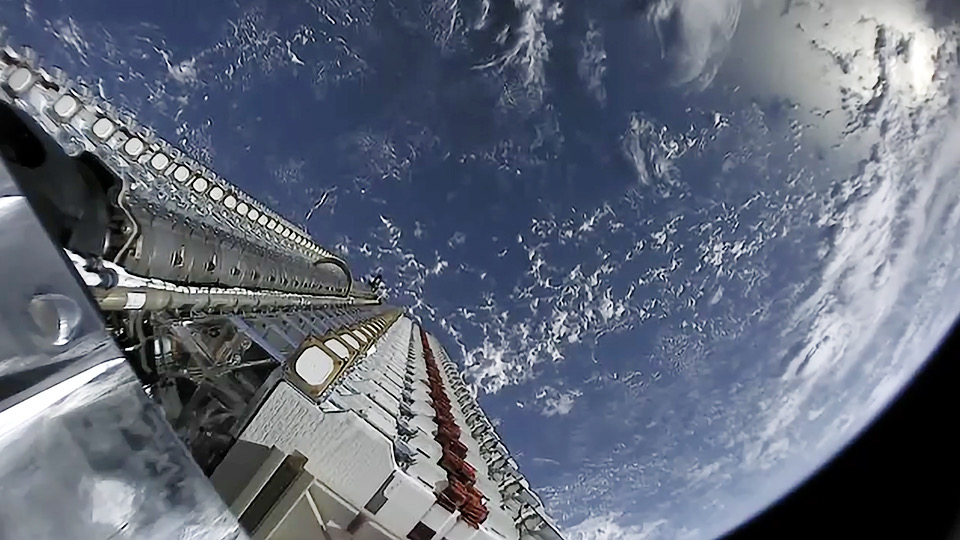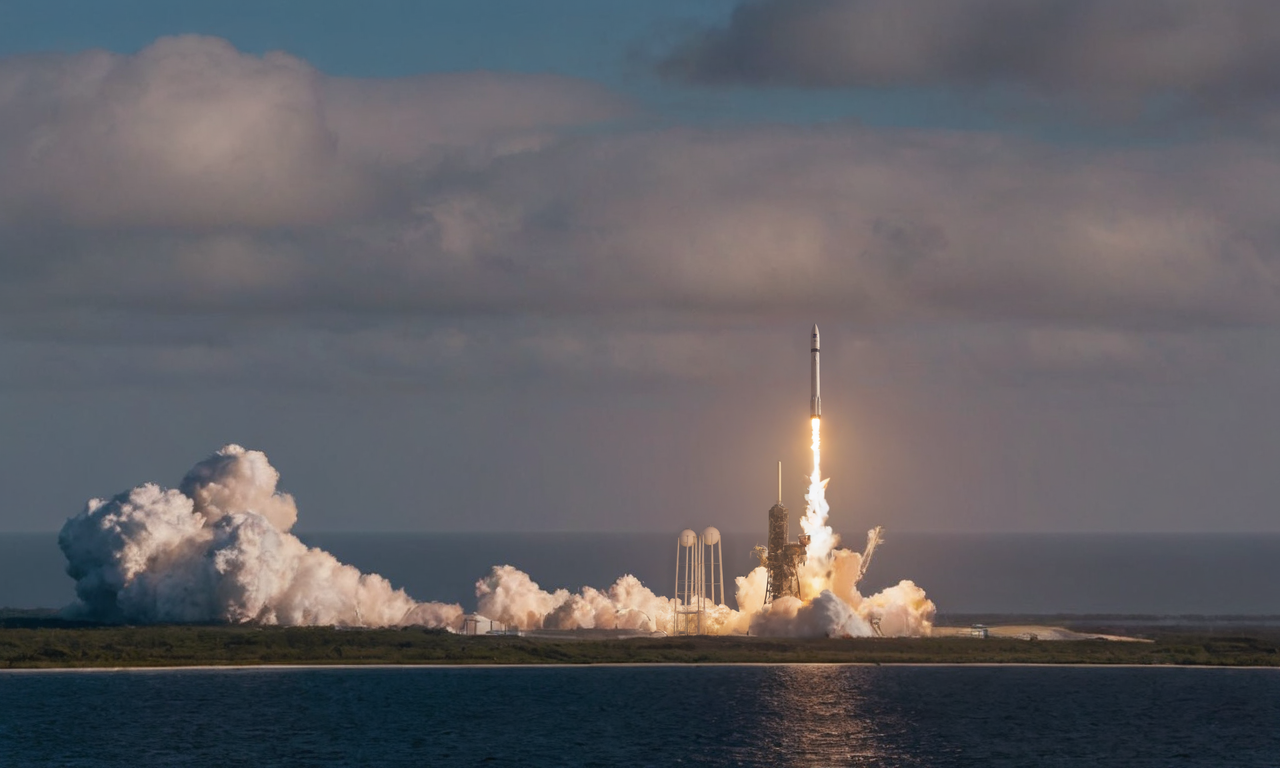· space brief · 7 min read
Space Brief 17 Jun 2025
Today's space brief covers key developments in satellite monitoring, U.K. defense contracts, and critical licensing reforms supporting national security.

📄Top Stories
Today’s highlights include the FCC’s focus on strengthening national security through reforms in satellite licensing and a notable contract awarded to Astroscale by the U.K. for space weather and object-tracking missions. Additionally, insights into the U.S. military’s collaboration on hypersonic vehicle testing and NATO’s partnership with Planet Labs are discussed.
📰Detailed Coverage
FCC Enhances National Security through Satellite Licensing Reforms
The Federal Communications Commission (FCC) is advancing efforts to reform satellite licensing with a focus on national security. These reforms align with broader government strategies to secure satellite communications and ensure they meet defense standards. The FCC’s commitment underlines the importance of satellite monitoring in national defense planning.
Technical aspects of the reforms include stricter compliance measures and enhanced coordination with military agencies to prevent any potential risks from satellite operations. This emphasizes a growing connection between regulatory frameworks and security requirements, reinforcing necessary satellite tracking and management features for our users.
Read the full story: SpaceNews
Astroscale Wins U.K. Contract for Space Monitoring Mission
Astroscale has secured a $7 million contract from the U.K. government to deploy two cubesats by 2027 for monitoring space weather and tracking objects in low Earth orbit. This mission is part of a broader initiative to enhance space situational awareness, which is critical in managing the increasing number of satellites and debris.
These cubesats will play a crucial role in gathering data to protect both military and commercial satellite operations. The project underscores the importance of international collaboration in advancing satellite technologies to ensure global security and operational efficiency in space.
Read the full story: SpaceNews
Ursa Major to Power U.S. Hypersonic Test Flights
Ursa Major has been awarded a $32.9 million contract to supply engines for U.S. military tests of hypersonic vehicles. Their advanced Hadley engine will be integrated into Stratolaunch’s Talon-A, a reusable vehicle expected to significantly advance hypersonic technology.
The development of hypersonic capabilities is critical for maintaining strategic defense superiority. The Talon-A’s testing phases will not only push the boundaries of current aerospace technology but also integrate closely with satellite tracking systems essential for supporting hypersonic operations.
Read the full story: SpaceNews
NATO Enhances Surveillance with Planet Labs
In a strategic move to bolster its defense capabilities, NATO has partnered with Planet Labs to deploy a high-resolution imagery and intelligence platform. This will aid in enhancing global surveillance and ensuring rapid response to geopolitical changes.
The addition of Planet Labs’ satellite data and imagery allows for comprehensive monitoring, facilitating early warning systems that are critical in today’s dynamic geopolitical environment. Such partnerships highlight how satellite data can provide essential intelligence and support decision-making at the highest levels.
Read the full story: SpaceWar
Muon Space Secures Funding for Satellite Expansion
Muon Space has raised $146 million to expand its satellite manufacturing and defense constellations. This funding round, supported by several prominent venture capital firms, reflects growing interest in enhancing satellite capabilities for defense applications.
With this capital injection, Muon Space is poised to enhance its production capabilities and reinforce its constellations, providing critical data for military and civilian use. This expansion exemplifies the rapid development within the space industry, emphasizing the need for robust tracking and integration systems.
Read the full story: SpaceDaily
Chile’s Strategic Defense Shift
Chile is undergoing a strategic defense transformation under President Gabriel Boric, opting to move away from Israeli defense suppliers. This decision comes amid rising tensions and calls for an arms embargo on Israel.
Chile’s shift entails significant strategic and logistical adjustments, including exploring new partnerships and suppliers. This development signals broader geopolitical shifts that may influence regional defense policies and satellite-related activities in the Southern Hemisphere.
Read the full story: SpaceWar
🛰️Satellite Spotlight
- Satellite Name: ONEWEB-0497
- NORAD ID: 54116
- Launch Date: October 22, 2022
- Mission: ONEWEB-0497 is part of the OneWeb satellite constellation aimed at providing global broadband communication services.
- Orbit: Low Earth Orbit (LEO)
- Operator: OneWeb
- Fun Fact: This satellite is equipped with a Ku-Band payload that enables high-speed internet connectivity for remote areas across the globe.
Track this satellite in real-time on our web app: Track ONEWEB-0497
🌌Space Weather
Space weather conditions are currently quiet.
Current
R0 - S0 - G0
Last 24 Hour Maximums
R2 - S0 - G0
Recent Alerts
- X-ray Event: An X-ray class M6.5 event occurred. Area of impact primarily on the sunlit side of Earth, with limited high-frequency radio communication blackout for tens of minutes.
- 10cm Radio Burst: A significant 10cm radio burst was detected, indicating short-lived radio noise that may interfere with sensitive receivers including radar and GPS.
- X-Ray Flux Alert: X-ray flux exceeded M5 levels, with impacts similar to those of the earlier X-ray event.
- Geomagnetic K-index of 4 Alert: Active geomagnetic conditions expected, particularly impacting areas poleward of 65 degrees Geomagnetic Latitude; potential for weak power grid fluctuations and visible auroras in high latitude areas.
Next 24 Hours
-
Radio Blackouts Probability
- Minor: 75
- Major: 30
- Risk: None
-
Solar Radiation
- Probability: 30
- Risk: None
-
Geomagnetic Storming
- Scale: 0
- Impact: none
- Activity: Low
-
Impact Summary
- No risk of radio blackouts.
- No risk of solar radiation storms.
- Geomagnetic outlook shows no expected G1 (Minor) or greater storms.
- No significant solar wind features forecast.
- Decreasing chance for S1 (Minor) or greater solar radiation storms over the next three days.
- R1-R2 (Minor-Moderate) radio blackouts likely between 17-19 June.
Long Term Forecast
- Solar and Geomagnetic Activity (16 June - 12 July 2025):
- Solar activity expected to range from low to high.
- R1-R2 (Minor-Moderate) events likely, with chances for R3 (Strong) events, particularly from 16-22 June.
- Increasing complexity in region 4114 may lead to additional flare activity.
- Enhanced proton flux anticipated following the M8.4 flare on 15 June.
- High levels of electron flux expected at geosynchronous orbit from 16-22 June and 26 June-04 July.
- Geomagnetic activity may reach G1 (Minor) storm levels multiple times during the period due to coronal hole high-speed stream influences.
- Active geomagnetic conditions likely around 17 June and 18 June, as well as on other specified dates. Quiet to unsettled levels to prevail for other periods.
🚀Upcoming Space Launches
June 18
- SpaceX Falcon 9:
- Starlink Group 10-18 from Cape Canaveral Space Force Station, FL, USA (05:38 UTC) A batch of 28 satellites for the Starlink mega-constellation, SpaceX’s project for space-based Internet communication system.
June 19
- Russian Space Forces Angara A5/Briz-M:
- Kosmos (Unknown Payload) from Plesetsk Cosmodrome, Russian Federation (02:30 UTC) Unidentified payload for the Russian military.
- SpaceX Falcon 9:
- Axiom Space Mission 4 from Kennedy Space Center, FL, USA (08:53 UTC) This is a Crew Dragon flight for Axiom Space, carrying a professionally trained commander and three private astronauts to the International Space Station for an eight-day stay.
June 20
- Rocket Lab Electron:
- Symphony In The Stars from Rocket Lab Launch Complex 1, Mahia Peninsula, New Zealand (07:15 UTC) This is the first of two dedicated missions on Electron to deploy a single spacecraft for a confidential commercial customer.
- China Aerospace Science and Technology Corporation Long March 3B/E:
- Unknown Payload from Xichang Satellite Launch Center, People’s Republic of China (12:27 UTC) Details are TBD.
- United Launch Alliance Atlas V 551:
- Project Kuiper (KA-02) from Cape Canaveral Space Force Station, FL, USA (16:00 UTC) Project Kuiper is a mega constellation of satellites managed by Kuiper Systems LLC, a subsidiary of Amazon, intended to provide broadband internet access.
- SpaceX Falcon 9:
- Transporter 14 (Dedicated SSO Rideshare) from Vandenberg Space Force Base, CA, USA (21:19 UTC) Dedicated rideshare flight to a sun-synchronous orbit with dozens of small microsatellites and nanosatellites for commercial and government customers.
June 21
- Blue Origin New Shepard:
- NS-33 from Corn Ranch, Van Horn, TX, USA (12:30 UTC) NS-33 marks the 13th crewed flight for the New Shepard program and the 33rd in its history.
June 22
- SpaceX Falcon 9:
- Starlink Group 10-23 from Cape Canaveral Space Force Station, FL, USA (05:47 UTC) A batch of satellites for the Starlink mega-constellation, SpaceX’s project for space-based Internet communication system.
Note: Launch dates and times are subject to change due to technical or weather considerations.

Maurice Stellarski



